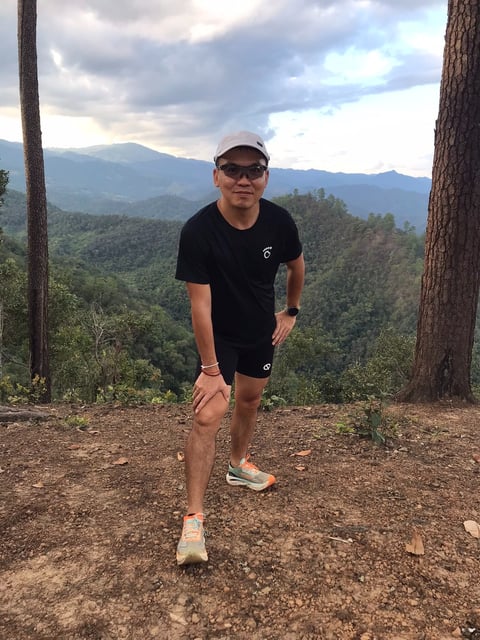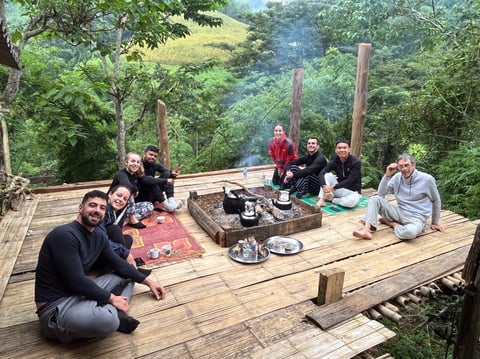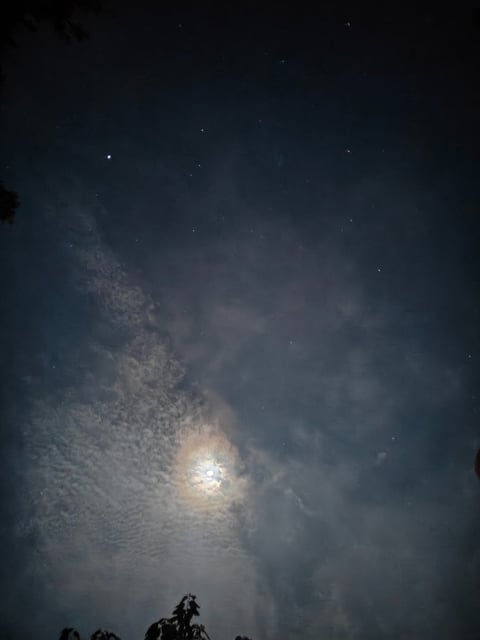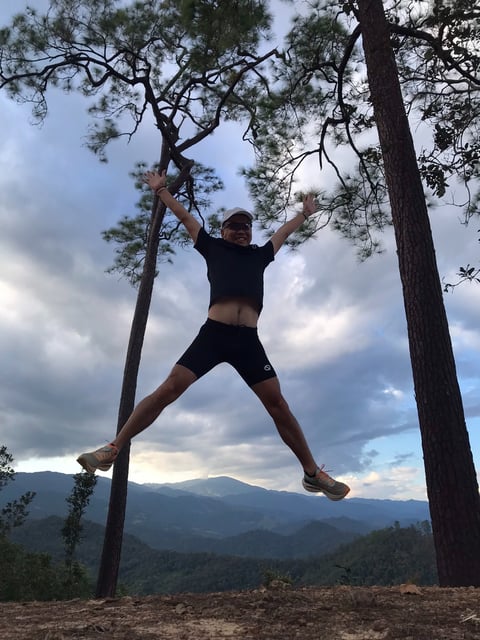Discovering the Joy of Trekking: A Serene 2D1N Trek in Chiang Mai


Outline of the Article
Introduction
What is Trekking?
Defining Trekking
How Trekking Differs from Hiking
The Allure of Chiang Mai
Historical Significance
Natural Beauty
Planning Your Trekking Adventure
Choosing the Right Trek
Best to Trek in Chiang Mai
The 2D1N Trek Concept
What Does 2D1N Mean?
Why Opt for a 2D1N Trek?
Preparation Tips
Essential Gear and Clothing
Physical Preparation
Day 1: Setting Off
The First Steps
Scenic Trails and First Breaks
Meeting Fellow Trekkers
Building New Friendships
Sharing Stories and Experiences
Lunch Break
Local Cuisine Highlights
Recharging for the Journey Ahead
Afternoon Trekking
Navigating Different Terrains
Wildlife and Plant Discoveries
Arriving at Karen Village
Homestay Village
Evening Activities and Relaxation
Night Under the Stars
Stargazing and Campfire Tales
Sleeping in the Wilderness
Day 2: Ready to Go
Morning Preparations
Starting the Day’s Trek
Exploring Remote Villages
Interacting with Local Tribes
Cultural Insights and Local Crafts
The Final Stretch
Completing the Trek
Reflecting on the Experience
Conclusion
FAQs
What should I pack for a 2D1N trek in Chiang Mai?
Is a 2D1N trek suitable for beginners?
What kinds of wildlife might I see?
How physically demanding is a 2D1N trek?
Are there any safety concerns?
Introduction
Ever found yourself yearning for a break from the mundane? That's exactly how I felt before embarking on a delightful 2D1N (2 days 1 night) trekking adventure in Chiang Mai. Let me take you through my journey, where every step was a discovery!
What is Trekking?
Defining Trekking
Trekking isn’t just a walk in the park—it's an exploration. Unlike a casual stroll, trekking usually involves longer and more challenging routes, often through rough terrain, showcasing nature’s raw beauty.
How Trekking Differs from Hiking
While hiking is also about enjoying scenic trails, it’s typically shorter and less demanding. Think of hiking as a delightful appetizer, and trekking as the fulfilling main course.
The Allure of Chiang Mai
Historical Significance
Chiang Mai, with its ancient temples and rich history, isn't just a trekker's paradise but a historian's delight. It feels like stepping back in time.
Natural Beauty
Lush forests, rolling hills, and cascading waterfalls—Chiang Mai is Mother Nature's canvas, painted with vibrant colors and stunning vistas that leave you spellbound.
Planning Your Trekking Adventure
Choosing the Right Trek
With countless trekking options in Chiang Mai, picking the right one can be daunting. Research, ask locals, and read reviews to find a trek that fits your skill level and interests.
Best Time to Trek in Chiang Mai
The cool, dry season from November to February is your best bet. The weather is pleasant, and the trails aren't as slippery or challenging as during the wet season.
The 2D1N Trek Concept
What Does 2D1N Mean?
Simply put, it stands for 2 days and 1 night. It's an ideal duration for trekkers wanting a taste of adventure without committing to a long-term expedition.
Why Opt for a 2D1N Trek?
It's perfect for a quick yet enriching escape from daily life. You get to experience diverse terrains, meet fellow adventurers, and immerse in local culture.
Preparation Tips
Essential Gear and Clothing
Pack light but smart. Essentials include sturdy trekking shoes, moisture-wicking clothes, a reliable backpack, and first-aid basics. Remember, layers are key!
Physical Preparation
A bit of stamina goes a long way. Engage in moderate cardiovascular exercises and leg strengthening routines a few weeks before your trek.
Day 1: Setting Off
The First Steps
My journey began early. The initial steps were filled with excitement and a tinge of nervousness. But as I got into the groove, the anticipation morphed into exhilaration.


Scenic Trails and First Breaks
The trails were like a natural symphony, with rustling leaves and chirping birds setting the mood. The Team took breaks to soak in the beauty and hydrate—those moments were pure bliss.
Meeting Fellow Trekkers
Building New Friendships
Trekking is a great way to meet like-minded souls. We exchanged stories, travel tips, and even a few hearty laughs. Those connections added an extra layer of joy to the journey.


Sharing Stories and Experiences
Each trekker had a unique story, and sharing them over occasional breaks created a warm, friendly atmosphere. It felt like we were a camaraderie of explorers.
Lunch Break
Local Cuisine Highlights
We stopped at a quaint spot to relish some local dishes. They say food tastes better when you’re outdoors, and oh boy, were they right!
Recharging for the Journey Ahead
The lunch break was more than just food; it was necessary downtime. We refuelled, rested, and geared up for the second phase of our trek.
Afternoon Trekking
Navigating Different Terrains
The post-lunch trek presented diverse terrains. From soft, cushy forest floors to rocky paths, each step was a new challenge and a fresh wonder.
Wildlife and Plant Discoveries
We stumbled upon exotic plants and elusive wildlife. Our guide’s knowledge turned these discoveries into fascinating lessons about the local ecosystem.
Arriving at Karen Village
Homestay Village
Arrival at the village was a mix of relief and excitement. Allocating our simple mattresses, gathering around, and watching the sun set was almost meditative.
Evening Activities and Relaxation
Whether it was sharing stories by the campfire or just soaking in the serene environment, the evening was a perfect blend of relaxation and reflection.
Night Under the Stars
Stargazing and Campfire Tales
With minimal light pollution, the night sky was a celestial wonder. Stargazing while listening to campfire tales created a magical, almost ethereal night.


Sleeping in the Wilderness
The serene sounds of the wild lulled us to sleep. It was rustic, yet incredibly peaceful.
Day 2: Ready to Go
Morning Preparations
The break of dawn brought a flurry of activity. A hearty breakfast, some stretching, and we were ready to continue.
Starting the Day’s Trek
The morning trek was invigorating. The cool air and morning light made the surroundings look even more enchanting.
Exploring Remote Villages
Interacting with Local Tribes
We visited remote villages where locals welcomed us with open arms. Their simplicity and warm hospitality were heartwarming.
Cultural Insights and Local Crafts
We learned about traditional crafts and way of life, which added a rich cultural dimension to our trek. It was like walking through a living museum.
The Final Stretch
Completing the Trek
As we neared the end, there was a mix of exhilaration and slight reluctance. Completing the trek felt triumphant yet made us yearn for more.
Reflecting on the Experience
Every step echoed in memory, reminding us of the beauty, challenges, and simple joys. This trek wasn’t just a journey; it was an experience that etched itself in our hearts.
Conclusion
Trekking in Chiang Mai etches a beautiful, indelible mark on the soul. The 2D1N trek was more than just an adventure; it was a joyful exploration of nature, culture, and camaraderie. So, if you ever find yourself craving a break from the ordinary, pack your bags and hit the trails in Chiang Mai. You won’t regret it!


FAQs
What should I pack for a 2D1N trek in Chiang Mai?
Essentials include sturdy trekking shoes, moisture-wicking clothing, a reliable backpack, basic first-aid kit, snacks, and plenty of water.
Is a 2D1N trek suitable for beginners?
Absolutely! While some physical preparation is recommended, the trek is generally suitable for most fitness levels.
What kinds of wildlife might I see?
Expect to see exotic birds, various insects, and potentially some small mammals. Always follow your guide's advice on wildlife safety.
How physically demanding is a 2D1N trek?
The trek involves moderate physical activity. While it's not extremely strenuous, being in good health and having some stamina will enhance your experience.
Are there any safety concerns?
Trekking is generally safe, especially when guided. However, always stay aware of your surroundings, follow your guide’s instructions, and don't wander off alone.
